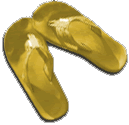Life’s calculations and consequences
As soon as the cat had lapped up the milk, the cat began to kill the rat; the rat began to gnaw the rope; the rope began to hang the butcher; the butcher began to kill the ox; the ox began to drink the water; the water began to quench the fire; the fire began to burn the stick; the stick began to beat the dog; the dog began to bite the pig; the little pig …jumped over the stile... (The Old Woman and Her Pig – Mother Goose Rhymes).
Then there is the story of an old lady who swallowed a cow, a goat, a dog, a cat, a bird, a spider and a fly. But don’t ask me why she swallowed a fly? The logical series of events ends with swallowing a horse. She’s fine of course!
Life is full of decisions, and these decisions have consequences. Every athlete exercises self-control in all things. They do it for a perishable wreathe. But we are imperishable. (1 Corinthians 9:25).
In my life experience I have witnessed the struggle and sacrifice of weigh twatchers. One man lost a large portion of his body mass only to regain it. “When all those cells are hungry, it is hard not to eat,” he said.
There is a myth about the food supply in life. Everyone is allotted their portion of food. When you have used up all your food, then you die. This theory might suggest moderation is important in how we manage our lifetime supply of food.
Using seventy years as a round number for life expectancy means that we could consume 76,650 meals in our lives. Now suppose we eat just a little more than we need at each of those meals? Even a small portion more? I’m using round figures here.
Ascetic comes from the Greek word meaning monk. Self-discipline requires self-denial and a moderation in how we enjoy life’s pleasures. A healthy asceticism can translate into a more rigorous spiritual devotion.
Careful consideration is required to adapt a wholesome lifestyle that is both physically and spirituality rewarding. In the rhyme about the old woman and her pig we see that every action has a resulting consequence.
In the liturgical calendar our churches review a series of events that lead us through spiritual consequences. Advent and Christmas are followed by Lent and Easter. The Resurrection is followed by the Ascension. Then Pentecost is followed by Holy Trinity Sunday, and Corpus Christi brings us back into Ordinary Time.
The liturgical calendar outlines for us the key elements of the Life of Christ from his birth until his ascension, until the glorious expectation of his triumphal return. We remember the life of Jesus in a meaningful way.
Jesus entered our world in time and space, and the liturgical calendar is an attempt to express and participate in the fullness of Jesus’ experience on earth. Key aspects of the life of Christ are coordinated with the solar calendar.
The liturgical year serves as a primer on how to cover all the bases in a year. It is like a doctor saying, “Here are the things you need to be spiritually healthy: diet, exercise, and rest.” Our spiritual physician directs us to build, nourish and protect the divine life within us.
(550 words)

